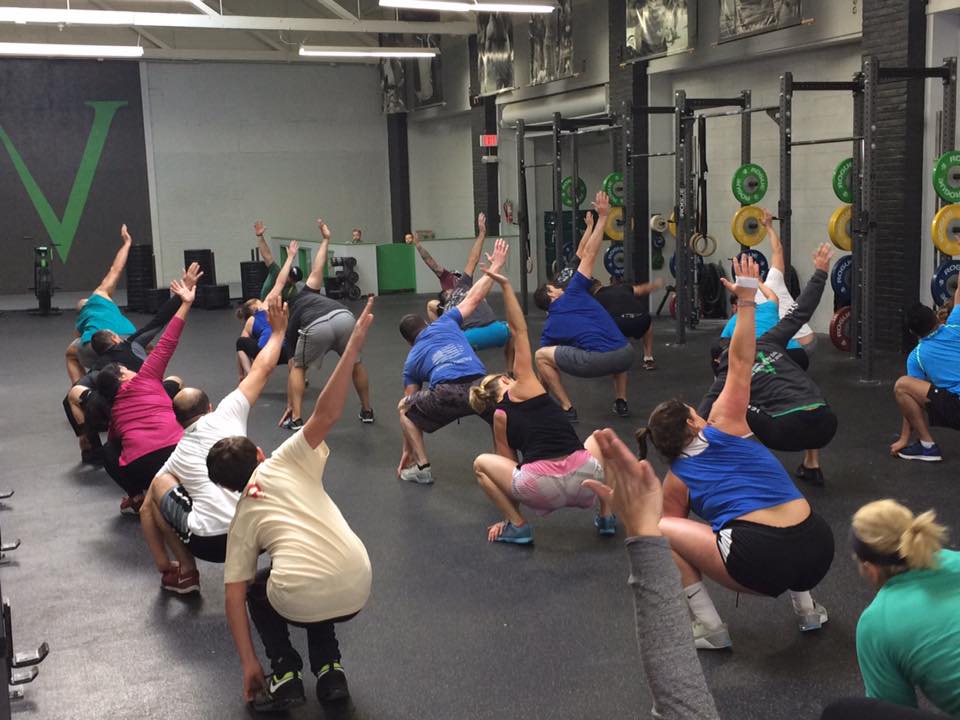 Mobility vs. Flexibility: What’s The Difference?
Mobility vs. Flexibility: What’s The Difference?
Written by Calvin Sun
Over the past few years, strength coaches and physical therapists have found themselves on convergent paths. Many PTs are required to have a certification in strength and conditioning and more coaches are finding themselves at seminars learning about myofascial release and techniques for increasing range of motion.
Stretching
In the past, coaches and trainers would simply instruct their clients on how to “stretch”, focusing on increasing flexibility by lengthening muscles that might be short and tight.
Mobilization
Today, especially in the CrossFit community, we hear the term “mobilization” used in conjunction with or even in place of the word “stretching”. This has caused some confusion amongst coaches, clients, and their respective physical therapists, chiropractors, and massage therapists.
In a clinical setting, joint mobilization typically refers to a type of manual therapy intervention where a therapist will physically move the joint to help restore function and/or alleviate symptoms. However, more commonly, coaches are referring to the definition popularized by Kelly Starrett of MobilityWOD.
He describes mobilization as “a movement-based integrated full-body approach that addresses all the elements that limit movement and performance including short and tight muscles, soft tissue restriction, joint capsule restriction, motor control problems, joint range of motion dysfunction, and neural dynamic issues. In short, mobilization is a tool to globally address movement and performance problems”.
Proactive Mobility
Mobility should be a proactive approach, not a reactive one. In other words, don’t wait until problems arise before you address them. Too often I will see athletes finish a workout that might have hundreds of repetitions of loaded squats or pressing and do absolutely nothing to address the potential issues that are usually right around the corner. Having said that, there’s a great deal you can do to prevent injury, speed recovery, and improve performance. We can break down mobilization into three primary modalities: soft tissue work, stretching, and joint mobilization.
Soft Tissue Work
There are a number of modalities within soft tissue work. In gyms, self-myofascial release (SMFR) is the most common form of soft tissue work. Tools such as foam rollers, massage sticks, Theracanes, and lacrosse balls are common tools for this modality.
SMFR can be performed before or after training sessions. Sometimes SMFR alone isn’t enough and an athlete will have to seek out a massage therapist, chiropractor, or physical therapist who is trained to deal with issues outside the scope of a fitness coach. Modalities such Active Release Technique (A.R.T.), Rolfing, Muscle Activation Technique, Structural Integration, and Trigger Point Therapy are amongst the techniques you will find utilized by professionals. If you are experiencing sharp, shooting pain, your coach should refer you to an appropriate medical professional.
Common Stretching Techniques
Static stretching and proprioceptive neuromuscular facilitation (PNF) stretching are the two most common ways to stretch short, tight muscles.
Static Stretching
Static stretching normally involves using stretches that hold the target muscle in a lengthened position. Through autogenic inhibition, this method allows for increases in passive range of motion. Static stretches are typically held for at least 30 seconds.
PNF Stretching
PNF stretching comes in a variety of forms but most commonly is performed by stretching the tight muscle, isometrically contracting the muscle, and then stretching the muscle further. The usual recommendation is five cycles of 5 seconds of contraction followed by 10 seconds of passive stretching.
Joint Mobilization
A variety of techniques can be used for joint mobilization, including stretch bands, to provide distraction at a given joint. The goal of joint mobilization is to help increase the extensibility of a joint capsule by breaking up adhesions and/or stretching the capsule itself. Be cautious if you are experiencing pain or are prone to joint subluxations or dislocations as joint mobilization is contraindicated. Having said that, it is advised against using any sort of band distraction if you are pregnant as the increased joint laxity can be problematic.
Mobilization vs Warm-Ups
Mobility or mobilization is not to be confused with a warm-up. The primary focus of mobility is to improve positions thereby improving power output and performance. A warm-up is designed to prepare the body for movement, it does not solve positional problems. Most group classes at Invictus involve a warm-up consisting of dynamic range of motion movements, which will certainly help to prepare you for the impending training session. However, if you are positionally inhibited you will need to supplement your training with mobility work in order to resolve any positional problems you might have.
Do you need to work on your mobility, flexibility or both?

mason likes men
heeheeheehaa
Cheese burger homeless cuties
jasper is a small boy
a
q
AHHHHHHHHHHHHHHHHHHHHHHHHHHHHHHHHHHHHHHHHHHHHHHHHHHHHh
I like big bois, and i am ga
go home
biggggg girl
poooooooooooooooooooooooooooooooooooooooooop